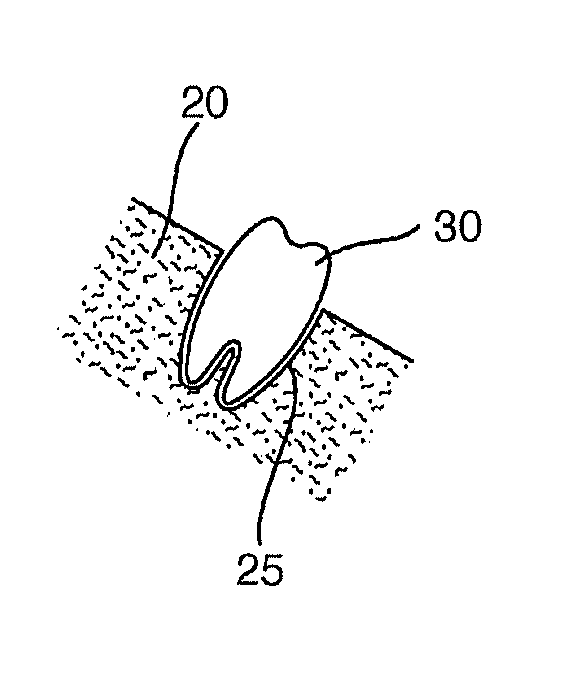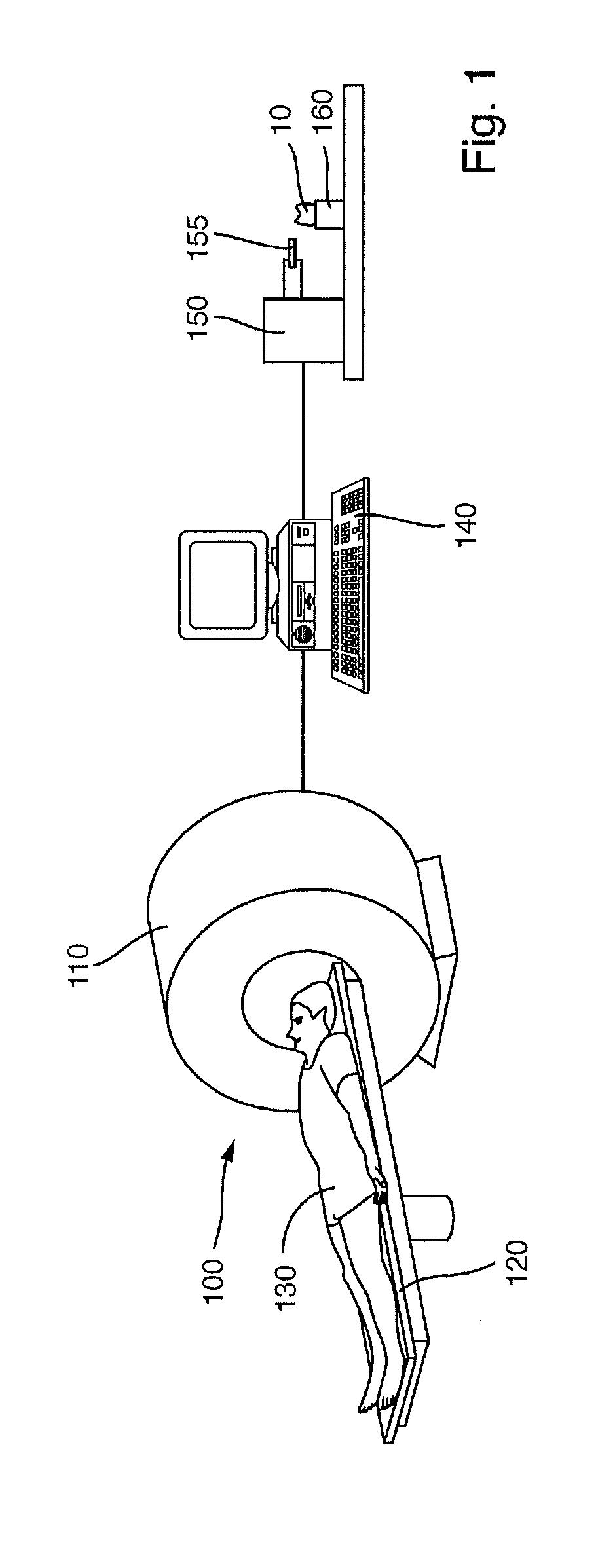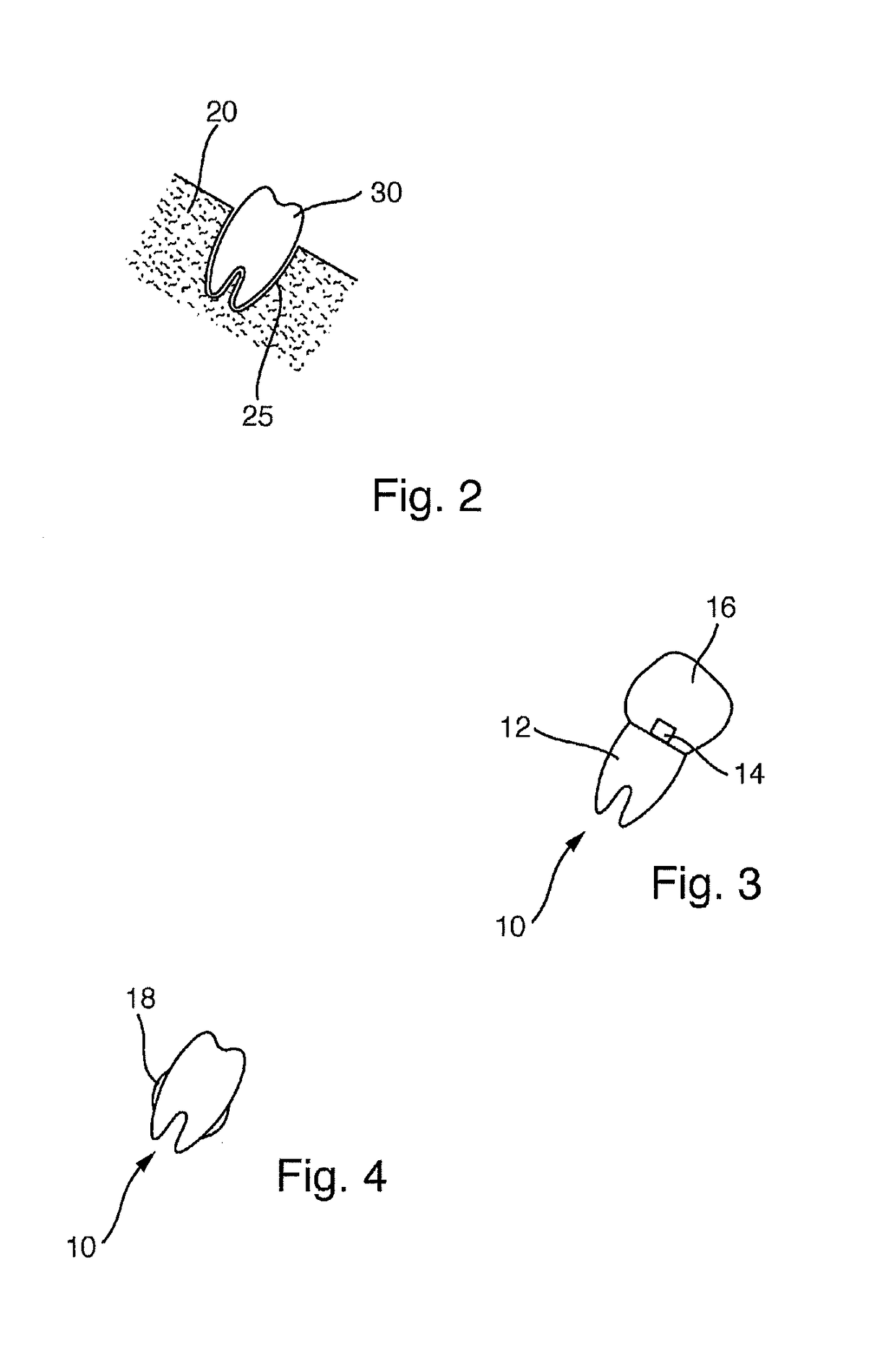Method for producing an anatomical dental implant
a dental implant and anatomical technology, applied in the field of bone replacement and bone replacement, can solve the problems of only possible printing of such a print, significant patient stress, patient treatment errors, etc., and achieve the effect of simplifying treatment, simplifying data use, and simplifying treatment for a medical practitioner
- Summary
- Abstract
- Description
- Claims
- Application Information
AI Technical Summary
Benefits of technology
Problems solved by technology
Method used
Image
Examples
Embodiment Construction
[0055]FIG. 1 shows a system 100 for producing a bone replacement 10.
[0056]The system 100 has a computed tomography (CT) scanner 110. A couch 120, on which a patient 130 lies in the present case, is arranged in front of said computed tomography scanner. The couch 120 can be inserted into the computed tomography scanner 110 such that the patient 130 can be examined by means of the computed tomography scanner 110. In particular, this allows the measurement of a cavity in a bone of the patient 130, for which a bone replacement is intended to be produced. In particular, this can be used to measure a cavity for receiving a tooth and also the tooth situated therein.
[0057]The system 100 further comprises a computer 140 which is connected to the computed tomography scanner 110 for the purposes of receiving data. Depending on its measurement of the patient 130, the computed tomography scanner 110 produces initial data which are supplied to the computer 140. Said data may be both indicative fo...
PUM
| Property | Measurement | Unit |
|---|---|---|
| computed tomography | aaaaa | aaaaa |
| CT | aaaaa | aaaaa |
| magnetic resonance imaging | aaaaa | aaaaa |
Abstract
Description
Claims
Application Information
 Login to view more
Login to view more - R&D Engineer
- R&D Manager
- IP Professional
- Industry Leading Data Capabilities
- Powerful AI technology
- Patent DNA Extraction
Browse by: Latest US Patents, China's latest patents, Technical Efficacy Thesaurus, Application Domain, Technology Topic.
© 2024 PatSnap. All rights reserved.Legal|Privacy policy|Modern Slavery Act Transparency Statement|Sitemap



